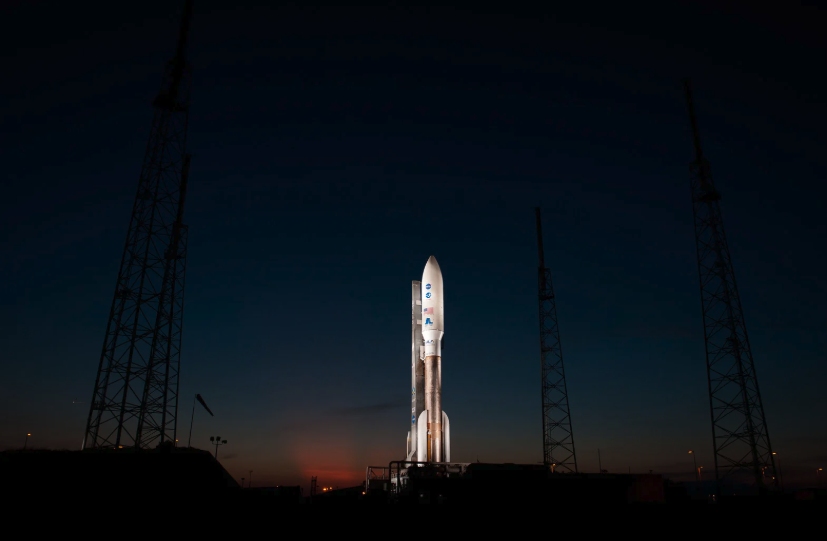A Complete Overview of FPGAs for Space Applications

More from the Category
Field Programmable Gate Arrays (FPGAs) are transforming the space sector and are playing a crucial role in the success of modern space missions. Their reprogrammable nature, high performance, and adaptability make them indispensable in handling the unique challenges of outer space. FPGAs enable real-time data processing, efficient communication, and robust control systems in satellites, orbital systems, and deep-space probes.
The harsh environment of space, however, demands specialized space-qualified FPGAs. Radiation exposure, extreme temperatures, and power constraints push these components to their limits, so engineers must address these challenges with their designs.
This article explores the significance of FPGAs for space applications, the hurdles they face, and how advancements in technology are paving the way for more resilient designs.
Why FPGAs are Vital for Space Applications
The demands of outer space missions require hardware that is not only powerful but also adaptable. FPGAs for space applications stand out because of their unique ability to be reprogrammed and optimized for a variety of tasks. Unlike traditional Application-Specific Integrated Circuits (ASICs), FPGAs can be re-configured multiple times, which is why they are indispensable in environments where flexibility is required.
Adaptability in Mission-Critical Scenarios
Space missions are inherently unpredictable. Conditions can change, new data may emerge, and hardware may need to be reconfigured to meet evolving requirements. Space FPGAs perfectly suited for such missions because they allow engineers to update and reprogram them post-launch. This adaptability extends the functional lifespan of equipment, which lowers costs and maximizes mission potential.
High Performance for Complex Tasks
Space missions generate enormous amounts of data from sensors, cameras, and scientific instruments. FPGAs handle these workloads efficiently, performing real-time data processing and analysis. With their parallel processing architecture, they can manage multiple tasks simultaneously.
Customizable for Specific Needs
Every space mission has its own set of challenges and objectives, and FPGAs can be tailored to meet mission-specific requirements, from communication protocols to control systems. This level of customization ensures that each FPGA operates at optimal performance for its intended use.
Types of Space of FPGAs

Deploying FPGAs in outer space requires careful selection of technology based on the mission’s demands and environmental challenges. There are three main types of FPGAs used in space, each with its own strengths and trade-offs.
SRAM-Based FPGAs
SRAM-based FPGAs are known for their high performance and reprogrammability. These devices offer exceptional computational power and are suitable for complex data processing tasks. However, they are highly susceptible to radiation-induced Single Event Upsets (SEUs), which can corrupt their configuration. Techniques like Triple Modular Redundancy (TMR) and error correction are often employed to mitigate this risk. Despite their vulnerability, SRAM-based FPGAs are widely used in space applications where reprogrammability is critical.
Flash-Based FPGAs
Flash-based FPGAs strike a balance between performance and radiation tolerance. Their inherent resistance to SEUs makes them more reliable in radiation-heavy environments. Additionally, they retain their configuration even when powered off, which is a practical advantage for power-constrained missions. Flash-based FPGAs are often used in satellites and systems requiring moderate reprogrammability and robust performance.
Antifuse-Based FPGAs
Antifuse-based FPGAs are the most radiation-tolerant of the three types, thanks to their one-time programmable architecture. Unlike SRAM- or Flash-based FPGAs, these devices are immune to SEUs, and so are highly reliable for critical systems. However, their lack of reprogrammability limits their use to applications where functionality is fixed before launch, such as control systems or fail-safe mechanisms.
Challenges in Deploying FPGAs in Outer Space
The extreme conditions of space, including high radiation levels, thermal fluctuations, and limited power availability, create unique challenges that engineers must overcome to ensure reliability and performance.
Radiation Exposure
Radiation is one of the most significant threats to electronic components in space. Cosmic rays and solar particles are high-energy particles that disrupt an FPGA’s configuration. In severe cases, radiation can lead to permanent damage and render components inoperable. SRAM-based FPGAs, which rely on volatile memory, are particularly vulnerable to these effects.
Mitigation Strategies:
● Triple Modular Redundancy (TMR) duplicates critical FPGA logic three times, using a majority voting system to correct errors caused by SEUs.
● Radiation-Hardened FPGAs are specially designed FPGAs that withstand higher radiation doses without compromising performance.
Thermal and Power Constraints
Spacecraft often operate in environments with extreme temperature swings, from intense heat when exposed to the Sun to freezing cold in shadowed regions. These fluctuations can strain FPGA components, affecting their reliability and longevity. Moreover, power is a precious resource in space, and power-hungry electronics like FPGAs must be carefully managed.
Mitigation Strategies:
● Thermal Management Systems use advanced materials and heat-dissipation techniques to maintain stable operating temperatures.
● Low-Power Designs optimize FPGA configurations and workflows to minimize energy consumption without sacrificing performance.
Reliability Over Long Durations
Space missions can last years, or even decades, so they require components that remain operational without maintenance. Space-qualified FPGAs must meet stringent reliability standards to endure the rigors of long-term operation.
Mitigation Strategies:
● Rigorous pre-launch testing simulates space conditions, including radiation, thermal cycling, and vacuum exposure.
● Use of antifuse-based FPGAs for applications where maximum reliability is essential.
Limited In-Mission Repair Options
Once deployed, hardware in space cannot be physically accessed for repair or replacement. This limitation makes system resilience a top priority, as even minor failures can jeopardize the mission.
Mitigation Strategies:
● Leveraging FPGAs’ reprogrammable nature to implement in-mission updates and corrections.
● Incorporating redundant systems to ensure continuous functionality despite component failures. With advances in radiation-hardened designs, thermal optimization, and low-power technologies, FPGAs are becoming increasingly reliable for the extreme demands of outer space.
Key Applications of FPGAs in Space
FPGAs power critical systems across a wide range of applications in space. Their flexibility, performance, and ability to handle complex tasks make them ideal for tasks ranging from the real-time data processing to the robust communication systems required by modern space missions.
Onboard Data Processing
Satellites and spacecraft generate enormous amounts of data from sensors, cameras, and scientific instruments, and FPGAs enable real-time analysis of this data, which reduces the need to transmit raw information back to Earth. This capability is essential for missions like Earth observation, where high-resolution images must be processed and compressed onboard, or deep-space exploration, where communication delays make real-time Earth-based processing impractical.
Communication Systems
FPGAs facilitate adaptable and efficient data transmission between spacecraft and ground stations by supporting dynamic modulation schemes and signal processing protocols. This flexibility allows for in-mission updates to optimize performance based on changing conditions.
In interplanetary missions, where communication delays and bandwidth limitations are significant challenges, FPGAs ensure reliable transmission of telemetry, scientific data, and commands. Their high-speed processing capabilities make them indispensable for maintaining secure and efficient links over vast distances.
Spacecraft Control Systems
FPGAs also manage essential operations such as navigation, attitude control, and power distribution. These systems require precise, real-time decision-making to maintain the spacecraft’s functionality and ensure mission success. FPGAs’ deterministic performance and low latency make them the ideal choice for these critical tasks.
Flexibility and Longevity
A defining advantage of FPGAs is their reprogrammable nature, which allows engineers to update or reconfigure systems after launch to extend mission capabilities and adapt to unforeseen challenges. For long-duration missions, this flexibility can mean the difference between success and failure.
FPGAs for Space Applications: Advancements and Future Trends

The rapid advancements of FPGAs for space applications is transforming the capabilities of modern spacecraft and satellites. From enhanced radiation tolerance to increased computational power, ongoing advancements in FPGA technology are meeting the demands of more ambitious and complex missions.
Radiation-Hardened Designs
One of the most critical areas of advancement is radiation-hardened FPGA technology. To withstand the extreme radiation environment of space, manufacturers are developing space-qualified FPGAs that incorporate innovative shielding techniques and radiation-tolerant architectures.
Next-generation FPGAs integrate triple modular redundancy (TMR) and self-correcting features at the hardware level to minimize the need for external mitigation techniques. This evolution allows engineers to build more robust systems with fewer compromises in performance or flexibility.
Higher Performance and Power Efficiency
As the need for real-time processing grows, new FPGA designs emphasize higher logic density, faster processing speeds, and improved efficiency, so that spacecraft can handle more data-intensive tasks. This is particularly crucial for Earth observation, where satellites must process terabytes of imaging data in orbit, and deep-space missions, where communication delays make onboard decision-making essential.
Manufacturers are also focusing on power-efficient designs that are critical for CubeSats and other small satellites with limited power resources.
Integration with AI and Machine Learning
The integration of artificial intelligence (AI) and machine learning (ML) algorithms into space FPGAs is an emerging trend with transformative potential. By embedding AI capabilities, FPGAs can enable real-time anomaly detection, adaptive navigation, dynamic mission planning and other autonomous systems. These advancements are particularly valuable for long-duration missions to remote regions of the solar system, where human intervention is not feasible.
AI-enabled FPGAs also allow for advanced data analysis onboard, which reduces the need to
transmit large volumes of raw data back to Earth. This approach not only conserves bandwidth but also accelerates the time-to-insight for critical mission data.
Miniaturization and Standardization
As the industry shifts toward smaller satellites and satellite constellations, FPGA technology is becoming more compact and modular, and efforts to standardize FPGA designs for space applications are also gaining momentum. By creating interoperable components, manufacturers and agencies can streamline development, reduce costs, and accelerate the deployment of new technologies across a broader range of missions.
Collaboration Driving Innovation
Collaboration between space agencies, private companies, and FPGA manufacturers is driving the rapid advancement of space technology. Organizations like NASA, ESA, and commercial space pioneers are working with FPGA leaders to develop solutions tailored to specific mission needs. As the space sector continues to expand, the role of space FPGAs will only grow, and these advancements will open new frontiers for exploration and innovation.
If you’re building systems for space using FPGAs or other components, Microchip USA can supply the parts you need. Our team of purchasing and supply specialists not only delivers world-class customer service — they also specialize in sourcing hard-to-find and obsolete parts for a variety of industries. Contact us today!